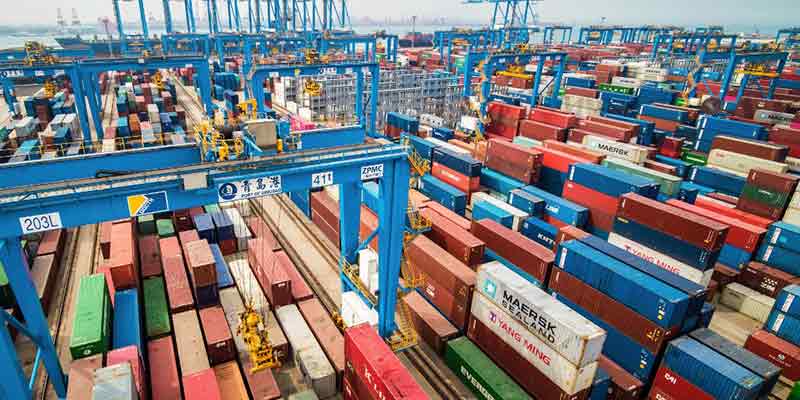- India
- Aug 24
Govt frames norms for enforcement of ‘rules of origin’ for imports under FTAs
The government has notified norms for the enforcement of ‘rules of origin’ provisions for allowing a preferential rate of customs duties on products imported under free trade agreements (FTA).
The new norms have been framed with a view to checking inbound shipments of low quality products and dumping of goods by a third country routed through an FTA partner country.
The Department of Revenue, under the finance ministry, has notified the ‘Customs (Administration of Rules of Origin under Trade Agreements) Rules, 2020’ which would come into force on September 21, 2020.
What is meant by ‘rules of origin’?
‘Rules of origin’ are the criteria needed to determine the national source of a product. Their importance is derived from the fact that duties and restrictions in several cases depend upon the source of imports.
There is wide variation in the practice of governments with regard to the ‘rules of origin’. While the requirement of substantial transformation is universally recognised, some governments apply the criterion of change of tariff classification, others the ad valorem percentage criterion and yet others the criterion of manufacturing or processing operation.
‘Rules of origin’ are used:
* To implement measures and instruments of commercial policy such as anti-dumping duties and safeguard measures.
* To determine whether imported products shall receive most-favoured-nation (MFN) treatment or preferential treatment.
* For the purpose of trade statistics.
* For the application of labelling and marking requirements.
Finance Minister Nirmala Sitharaman in her Budget Speech had stated that the government would review ‘rules of origin’ requirements, particularly for certain sensitive items, so as to ensure that FTAs are aligned to the conscious direction of our policy.
She had also said that it has been observed that imports under FTAs are on the rise and undue claims of FTA benefits have posed threat to the domestic industry and such imports require stringent checks.
What are the key points in the notification?
These rules apply to import of goods into India where the importer makes a claim of preferential rate of duty in terms of a trade agreement.
The provision prescribes for the minimal processing that should happen in the FTA country so that the final manufactured product may be called originating goods in that country. Under this provision, a country that has inked an FTA with India cannot dump goods from some third country in the Indian market by just putting a label on it. It has to undertake a prescribed value addition in that product to export to India. ‘Rules of origin’ norms help contain dumping of goods.
To claim preferential rate of duty under a trade agreement, the importer or his agent, at the time of filing bill of entry, has to make a declaration in the bill that the imported products qualify as originating goods for preferential rate of duty under that agreement and produce certificate of origin.
What is Free Trade Agreement (FTA)?
It is an arrangement between two or more countries or trading blocs that primarily agree to reduce or eliminate customs tariff and non tariff barriers on substantial trade between them.
FTAs normally cover trade in goods (such as agricultural or industrial products) or trade in services (such as banking, construction, trading etc.).
It can also cover other areas such as intellectual property rights (IPRs), investment, government procurement and competition policy, etc.
India has signed FTA with a number of trading partners, including small countries. Some are:
Association of Southeast Asian Nations (ASEAN)
South Asian Free Trade Area (SAFTA)
Japan
South Korea
Malaysia
Singapore
Thailand
Bhutan
Nepal
Sri Lanka
What is the difference between PTA and FTA?
In a Preferential Trade Agreement (PTA), two or more partners agree to reduce tariffs on agreed number of tariff lines. The list of products on which the partners agree to reduce duty is called a positive list.
In FTAs, tariffs on items covering substantial bilateral trade are eliminated between the partner countries. However each maintains individual tariff structure for non-members.
The key difference between an FTA and a PTA is that in a PTA there is a positive list of products on which duty is to be reduced. In an FTA there is a negative list on which duty is not reduced or eliminated. Thus, compared to a PTA, FTAs are generally more ambitious in coverage of tariff lines (products) on which duty is to be reduced.
How is CECA/CEPA different from FTA?
A Comprehensive Economic Cooperation Agreement (CECA) or a Comprehensive Economic Partnership Agreement (CEPA) is different from a traditional FTA on two counts.
Firstly, CECA/CEPA are more comprehensive and ambitious than an FTA in terms of coverage of areas and the type of commitments. While a traditional FTA focuses mainly on goods, a CECA/CEPA is more ambitious in terms of a holistic coverage of many areas like services, investment, competition, government procurement, disputes, etc.
Secondly, CECA/CEPA looks deeper at the regulatory aspects of trade than an FTA. It is on account of this that it encompasses mutual recognition agreements (MRAs) that cover the regulatory regimes of the partners. An MRA recognises different regulatory regimes of partners on the presumption that they achieve the same end objectives.
Manorama Yearbook app is now available on Google Play Store and iOS App Store

